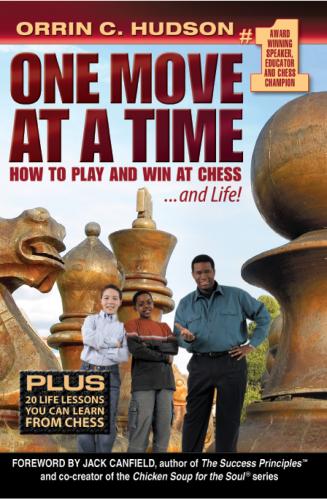What’s in This Book?
I will teach you:
How chess is set up and played
How to read and record chess games
Basic strategies and tactics
How to play through a winning game, step by step, from start to finish.
And in the second part of this book, I will demonstrate 20 different lessons you can learn from playing chess, and how to apply them to your life.
Ready, Set, GO!
Chess has been played all over the world for hundreds of years. It is the most popular board game of all time, with no sign of a slowdown.
Chess is a language all its own. Millions of players worldwide might speak different languages, but they understand each other through the universal language of chess.
You’re about to find out why this game is so widespread and why it has lasted so long. Chess is mysterious, deep, calming, exhilarating – even beautiful! And it’s a game that anyone can learn. All you need is the desire to learn.
So read on and discover the rewards, benefits and many doors that will open as you learn to play chess... one move at a time!
All the Right Moves
Nobody knows for sure if the story I told you at the beginning of this book is actually true.
Chess is so old, and is played in so many places in the world, that it’s difficult to trace its roots. There are many theories, but very few definite answers.
Where and when chess was invented is a mystery.
But most scholars agree that the game was invented to entertain the ruling class and to help them think about how to strategize in battle.
The Object of the Game
Two players compete in chess; one uses 16 light pieces, the other 16 dark pieces.
No matter what their actual color, the player with the light pieces is always called “White,” while the one with the dark pieces is always “Black.”
The object of the game is for one player to trap the other player’s King.
How, you ask? That’s what this chapter is all about.
Know the Territory
The chessboard is the battlefield where it all takes place. Think of it as your territory, the home that you need to defend!
It’s a big square made up of 64 smaller squares – 32 light, 32 dark.
There are eight rows lined side-by-side, horizontally. These are called ranks.
And there are eight rows stacked up-and-down, vertically. These are called files.
Figure 2-1: A rank
Figure 2-2: A file
When you set up the board, check and make sure that the lower right corner for both players is a white square.
Remember this with a simple rhyme:
White on the right.
If you have a chess board and chess pieces, get them out now and set up the board in front of you. Follow along with your hands and you’ll learn twice as fast.
Your Army
The chess pieces are the army you command. They protect your territory and your King, so get to know them well.
Each of the chess pieces has its own personal style. Some move forward, some move side-to-side, some move diagonally, and some can do combinations of moves.
Each player gets:
The Right Words
When talking about chess, it’s important to remember that there is a difference between “chess pieces” and “pieces.”
The word “pieces” is used only to describe Rooks, Knights, Bishops and the Queen.
It can include the King as well, but he’s usually just called “the King.”
What matters here is that pawns are not pieces.
When I use the word “pieces” in this book, I’m not talking about pawns.
When I want to discuss the entire set, I’ll use the words “chess pieces,” which includes all the pieces and pawns.
This rule of thumb is often true whenever chess play is discussed, though sometimes “chessmen” is used instead of “chess pieces.” I don’t like the term “chessmen” though, because they’re not all men!
You wouldn’t want to upset the Queen would you?
So keep the words straight:
Pawns – The pawns.
Pieces – Rooks, Knights, Bishops, the Queen and (sometimes) the King.
Chess pieces – Any or all of the pieces and pawns.
A piece is a piece
A pawn is a pawn
The King is the King
And that’s everything
One more note about naming: The Queen and Rooks are sometimes called the major pieces, while the Bishops and Knights are the minor pieces.
This is because, as you will see, the Queen and Rooks are more powerful than the Bishops and Knights.
Line Up!
The chess pieces are set up in two rows. The front row is made up of the eight pawns. To set up the back row:
1 Start by putting your two Rooks on the outside edges, one on the far left, one on the far right.
2 Next, moving from the outside in, fill in the six open squares between the Rooks. Put the two Knights beside the Rooks.
3 Put your Bishops beside the Knights.
4 Now only the two center squares are empty. This is where the King and Queen stand. But be careful, because their position changes depending on whether you’re playing White or Black.The key to remember is that the Queen is vain, and she likes her clothes to match her square.So put her on the light square if she’s the White Queen and on the dark square if she’s the Black Queen. The King goes next to her.
Set your chess pieces into position now and check to make sure that they match this picture:
Figure 2-3: The chessboard set up for play. Notice that the bottom right square is a white square.
When you look at the board, imagine a vertical line running up and down, right through the middle, which splits the board in half between the Queens and the Kings.
The half with the Kings on it is called
